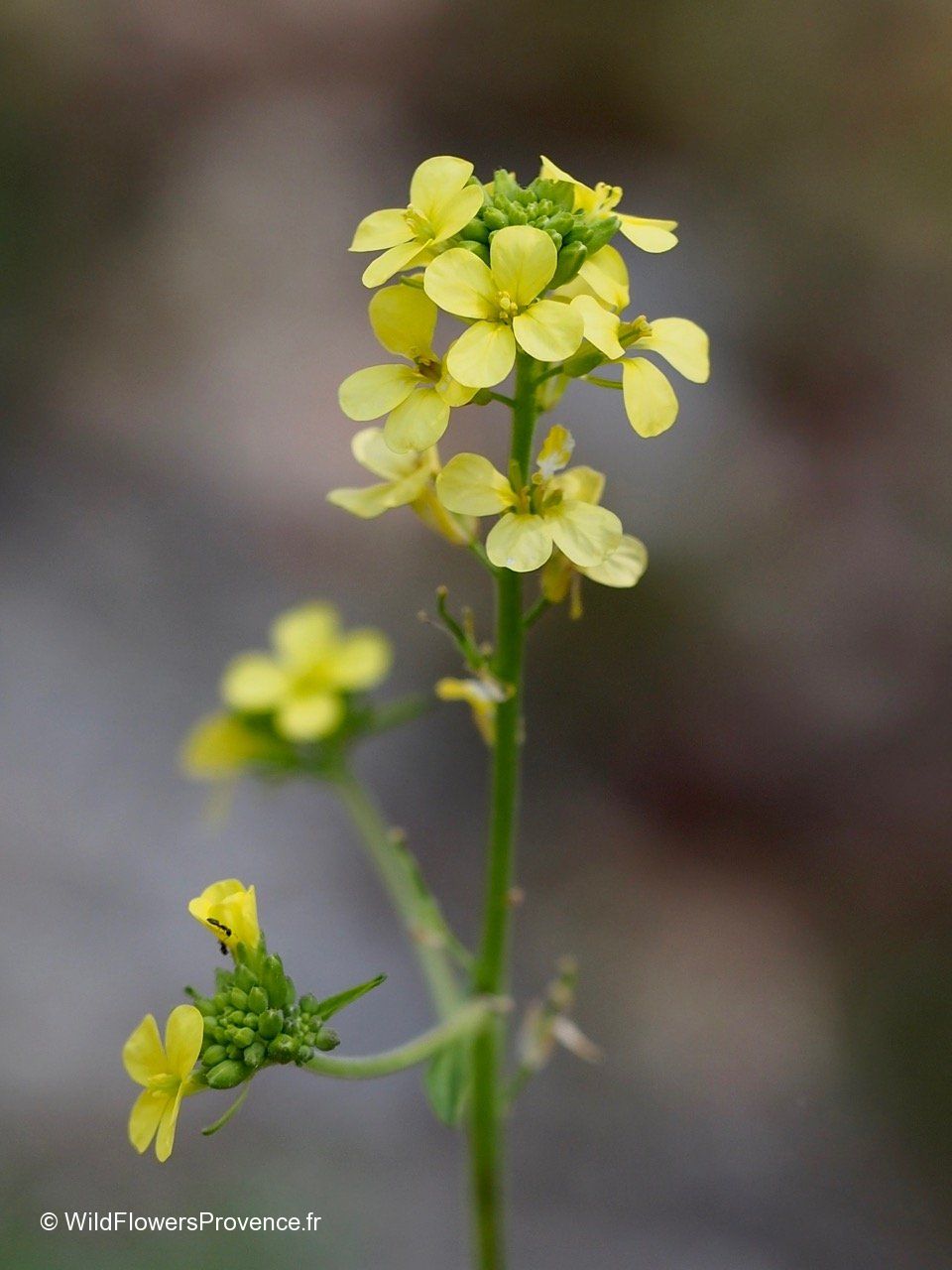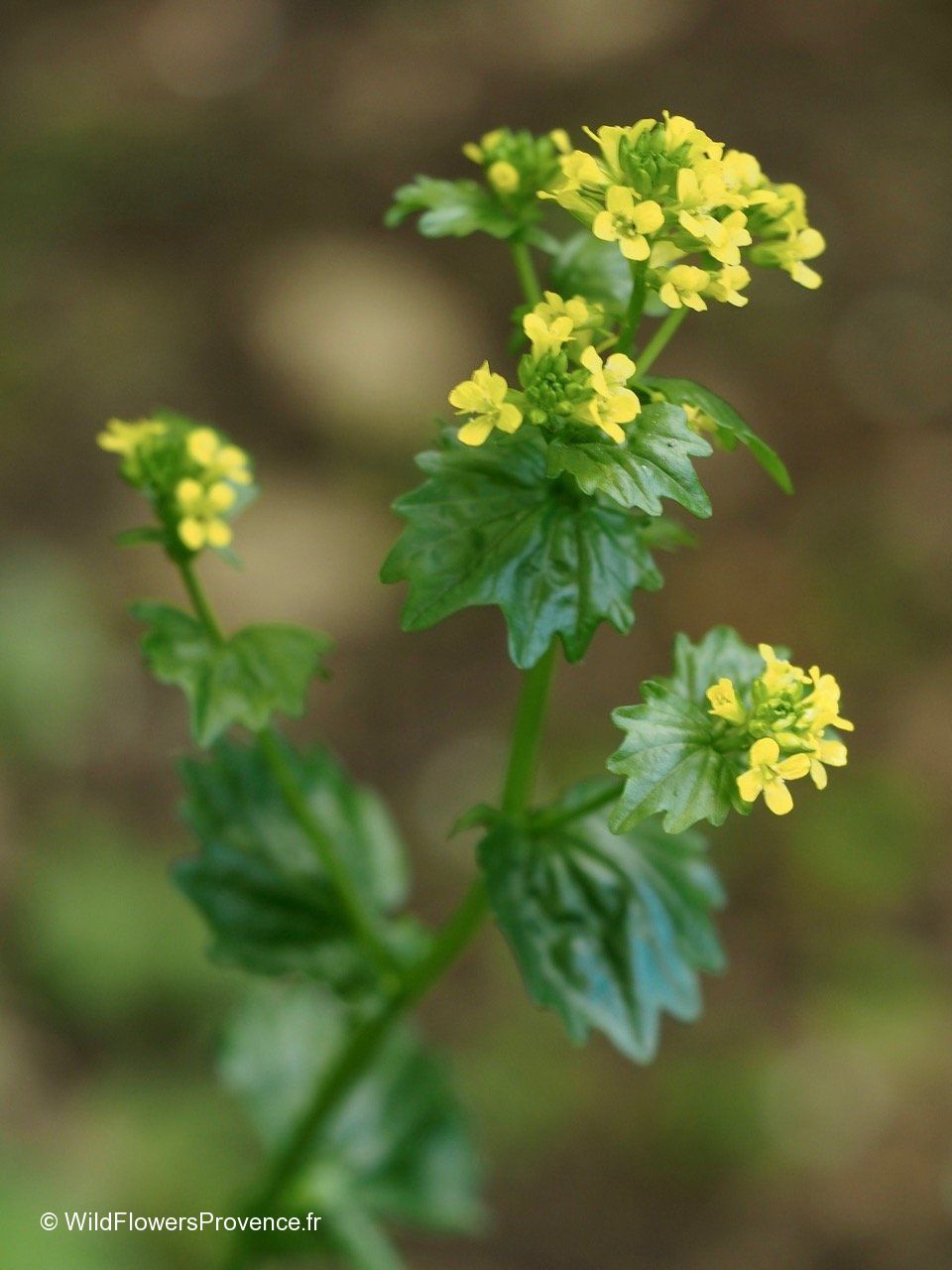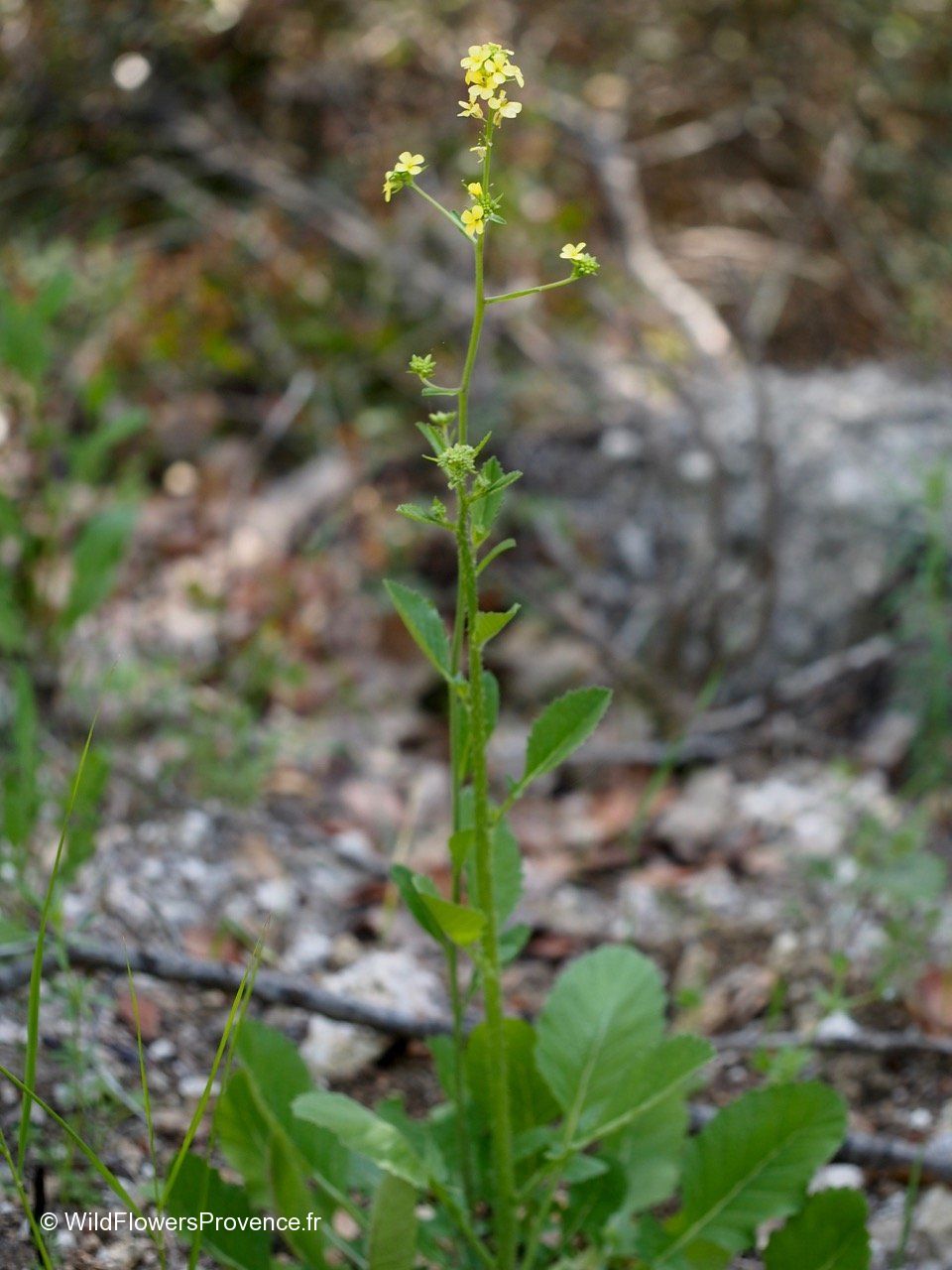Description
An upright, stiff, bristly plant recognisable by its branching habit and the upright pods aligned against the stem.
Formerly called Erysimum officinale. It has a long history and is still used today by herbalists. In folk medicine it was used for hoarseness and weak lungs. The French name, ‘Herbe aux chantres’, reflects the use of the plant to remedy loss of voice.
Flowers
Tiny yellow flowers at the end of the branches, in clusters.
Leaves
Pinnatisect leaf is deeply lobed, almost to the central midrib. Deeply lobed with lobes almost to central midrib or entire. The margins can be serrated or lobed.
Fruits Seeds
Schizocarp: a pod containing orange-brown seeds that splits into single seeded parts when ripe. The pods are upright, aligned against the stem, 7-18 mm.
Edible
Young leaves are used in salads, soups, omelettes and sauces. Seeds can be made into a mustard-like paste.
Medical
Whole plant, flowering parts and leaves: used since the time of the Greeks to treat throat and bronchial problems and to benefit the digestion.




